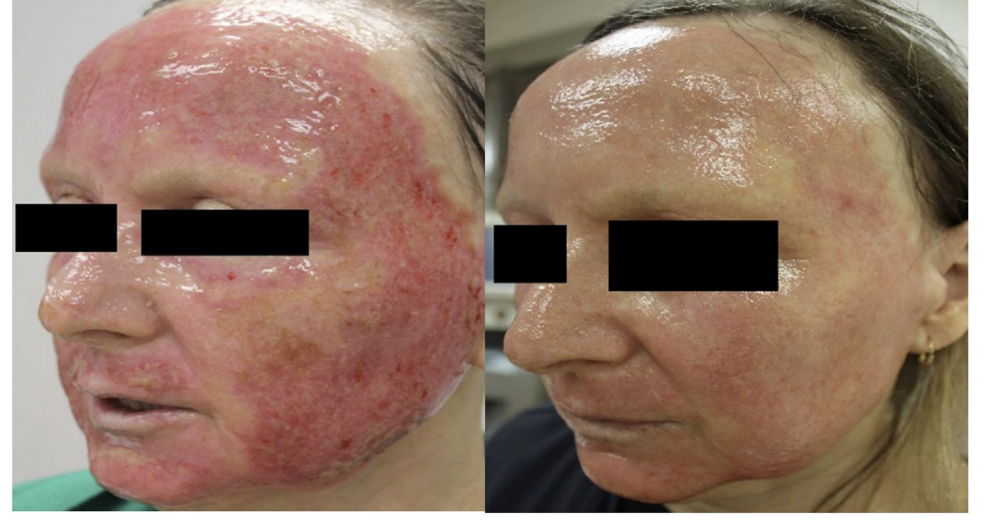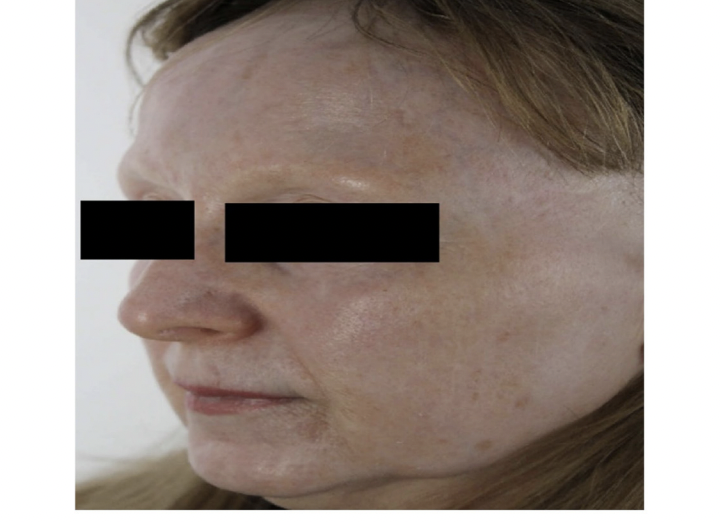Ablating Laser Resurfacing: A Contraindication in Frontal Fibrosing Alopecia
Extensive Facial Scarring in FFA After Laser Resurfacing
I was interested to read a really valuable report in JAAD Case Reports of a patient with unrecognized frontal fibrosing alopecia who developed extensive scarring after a laser resurfacing procedure done to address wrinkles and aging.
The patient in the report was a 63-year-old healthy woman. She had no no previous history of viral or bacterial skin infections which might increase the risk for a post procedure complication. She had not used isotretinoin in the past either which also might increase the risk for post procedure scarring.
She underwent fully ablative laser resurfacing with an erbium 2940-nm laser. After the procedure, she was told to use topical white soft paraffin and Cetaphil cleanser for 7 days. On day 6 after the procedure, areas of erosion developed on the superior forehead, bilateral infraorbital areas, and superior lip and were extensively swabbed for bacteria and viruses, the results of which were all negative. By day 12, complete reepithelialization was achieved and residual erythema settled in the next 5 weeks.
Figure 1 from Sun et al paper showing expected redness at day 2 post resurfacing procedure and day 7 post treatment. Complete reference: Sun et al. Extensive facial scarring after ablative laser resurfacing in a patient with frontal fibrosing alopecia JAAD Case Rep . 2022 Mar 26;23:123-127. Image presented with creative commons license.
By week 7, extensive global scarring over the treatment fields was observed, with the most extensive involvement in the forehead and perioral area.
Figure 2 from Sun et al paper showing extensive hypertrophic scarring of the forehead and perioral area at 7 weeks check-up post initial resurfacing procedure in the treatment field. Complete reference: Sun et al. Extensive facial scarring after ablative laser resurfacing in a patient with frontal fibrosing alopecia JAAD Case Rep . 2022 Mar 26;23:123-127. Image presented with creative commons license.
The cosmetic physicians immediately undertook various scar revision protocols including 3 weekly nonablative low-density CO2 laser treatments followed by topical 40 mg/ml triamcinolone suspension under 3-hour occlusion. Methylprednisolone aceponate ointment was prescribed for pulse regimen twice daily for 3 consecutive days with 4 rest days. Silicone gel was applied to the perioral area for the thickest scars 3 times a day.
Remarkably, 16 weeks weeks after the initial resurfacing procedure, the complete resolution of scarring was achieved with no recurrence at the 12-month follow-up.
Figure 3 from Sun et al paper showing complete resolution of hypertrophic scarring with the regimen of low density carbon dioxide laser, topical triamcinolone under occlusion, and topical silicone gel. Complete reference: Sun et al. Extensive facial scarring after ablative laser resurfacing in a patient with frontal fibrosing alopecia JAAD Case Rep . 2022 Mar 26;23:123-127. Image presented with creative commons license.
Comment
This is a really valuable paper and the authors are commended for sharing this report. Second, the meticulous care in the face of a complication - lead to a good outcome here. I think it’s quite fortunate that this patient had such amazing care. This outcome may not happen in all patients with this complication.
REFERENCE
Sun et al. Extensive facial scarring after ablative laser resurfacing in a patient with frontal fibrosing alopecia
JAAD Case Rep . 2022 Mar 26;23:123-127.
This article was written by Dr. Jeff Donovan, a Canadian and US board certified dermatologist specializing exclusively in hair loss.



